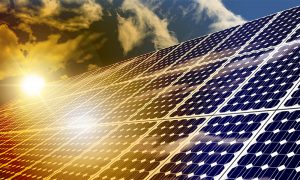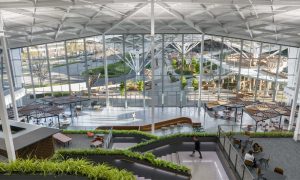Green Regulation and Codes: Taking the Right Steps
Big Project ME speaks to Wayne Morgan, sustainability consultant at Cundall, to understand the impact of green building codes and regulations on the UAE construction industry.

“Despite it being early days still for the Al Saafat Rating System, there are developers, consultants and contractors who are looking to implement sustainable practices on projects that desire LEED certification”
What sort of impact has the introduction of green building codes and regulations had on the way buildings are being designed and built in the UAE?
Over the last five to seven years, the increase in both the number of green building codes and their implementation has seen an increase. Originally, the LEED certification process was used, along with Estidama’s Pearl Rating System from 2010. In recent years, however, there has been a drive towards further localisation of standards, with the introduction of the GSAS Sustainability Rating System in other GCC countries, and more recently the newly released Al Saafat Rating System in Dubai.
Once implementation starts within Dubai – from 2018 onwards – all buildings will be required to achieve a minimum rating of Bronze, by using the system. This is a clear drive by Dubai Municipality to reduce the energy consumption of all new buildings, which in turn will force developers and designers to more closely consider the impact of the design and construction of the building. While previous regulations and rating systems have been in place and used, this is the first mandatory requirement put in place, which will ensure that minimum reductions will be met.
Initiatives like this demonstrate a step in the right direction for ensuring sustainable practices are used throughout the UAE. Currently, not enough emphasis is being placed on the use of sustainable practices – whether it’s developers, consultants or contractors. Having the Al Saafat Rating System in place will now ensure that this is achieved on all buildings in Dubai.
In the wake of these changes to the rules and regulations, how are developers now working with consultants, designers, engineers and contractors to create buildings that are efficient when it comes to energy and water consumption?
Despite it being early days still for the Al Saafat Rating System, there are developers, consultants and contractors who are looking to implement sustainable practices on projects that desire LEED certification. Developers and owners are now looking at the control and implementation of sustainable design – not just through the original construction, but also for future fit-outs. Previously, there was less control of the fit-out process.
For example, Cundall has delivered numerous office fit-outs within the One Central development in the Central Business District and implemented LEED certification for multiple office spaces, so as to align them with the base building design. This is being carried on through to fit-out development, with fit-out works also requiring LEED certification. This imposes limitations on the use of water within the entire development, with the target set out by the developers being that all tenants achieve a water use reduction of at least 20%, while also encouraging a reduction in overall energy consumption and achieving CO2 reductions through the utilisation of materials available within the UAE.
Has the introduction of these regulations encouraged a shift towards buildings that use new technologies and methodologies to become living, breathing and adaptable spaces that react to the environment around them?
The recent introduction of the WELL building standard has only had a small impact within the region, with only a few buildings looking to achieve any level of certification at this time, although we are seeing an increased interest in it. The WELL standard is more occupant-driven and ensures the health and well-being of the building’s occupants. This will help drive the technologies within buildings to be more adaptive to the occupant and their overall experience. There are a small number of designers who take this into consideration, mostly driven by internal global standards of individual companies.
Cundall has implemented WELL standards in its London offices and was the first office to achieve WELL certification in the UK and Europe. Since then, we have seen an incredibly positive impact on our people and business, with the statistics showing that absenteeism has dropped by 50%, while staff turnover has dropped by 27% within the first year. We are now in the process of implementing the same standards into our Dubai office, where we’ll also utilise all our experience and knowledge.
Designers are now incorporating more systems that promote occupant well-being. This is being implemented through lighting solutions that utilise circadian rhythms to align with the body’s own cycles, promoting productivity. The design of the air conditioning systems to provide greater thermal comfort within the space and provide more occupant control is another example. Also, this has seen the implementation of a number of practices to make the building environments more improved for occupants.
Biophilic design is increasingly being considered, with green or living walls, or by providing occupants with access to external garden areas, either within the development or at rooftop levels. Clients are also looking at ways to provide employees with facilities that improve their well-being, such as by providing gym facilities on-site or creating more innovative breakout spaces.
While there is still a long way to go in terms of achieving full sustainable design within the region, Dubai is starting to take the right steps towards achieving tangible results in reducing energy consumption.



















